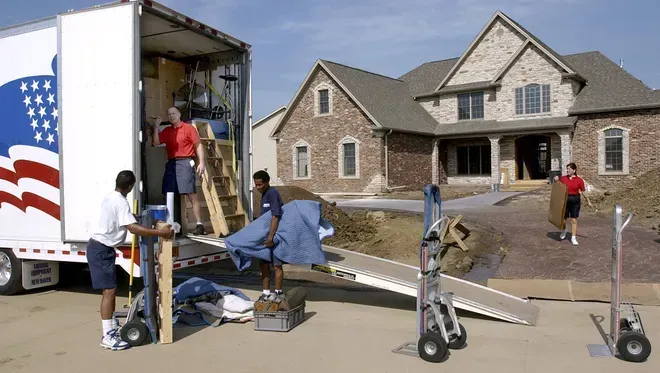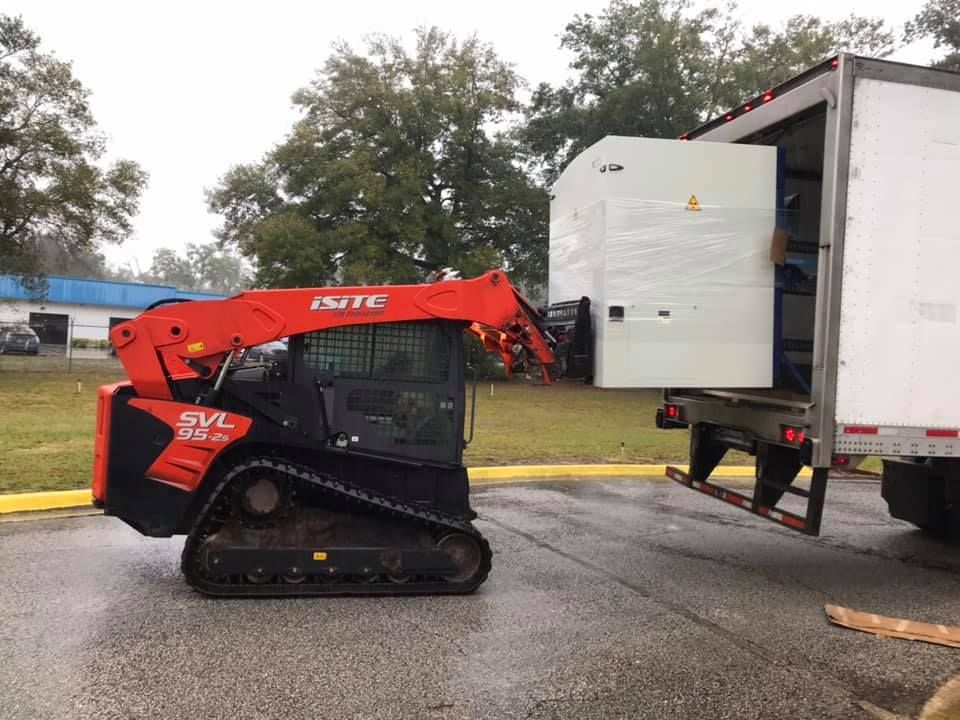BLOG
We Earned Their TRUST...
Now, Let Us Earn Yours!
Smart Strategies for Affordable Home Moving: Save Money and Relocate Wisely

Moving expenses can quickly add up, with the average household relocation costing thousands. Smart, affordable moving strategies blend practical cost-saving techniques with professional support to ensure a budget-friendly move. In this guide, you’ll discover how focused approaches—like decluttering, finding free packing supplies, choosing the right time to move, and comparing DIY versus professional options—work together to cut moving costs while maintaining quality and efficiency. We’ll explore top methods to trim expenses for local and long-distance moves, explain how to avoid hidden fees in quotes, and share extra tips for tight budgets. Throughout, MOVE IT ALL’s Residential Moving Services offers expert assistance and clear pricing to bring each strategy to life. By mastering these tactics, you’ll plan a relocation that saves money, reduces stress, and leverages professional value where it counts.
What Are the Best Affordable Residential Moving Strategies to Cut Costs?
Affordable residential moving strategies focus on the main cost drivers—volume, labor, materials, and timing—by combining simple habits with smart planning. Reducing the weight of your belongings through decluttering lowers fuel and labor charges, while sourcing free packing supplies cuts material expenses. Choosing off-peak moving dates and comparing quotes ensures you secure lower rates and avoid premium surcharges.
Key cost-reduction strategies include:
- Decluttering before packing to reduce shipment weight and labor time.
- Selling, donating, or discarding unwanted items to trim moving volume.
- Finding free and low-cost packing supplies to eliminate or reduce material fees.
- Timing your move during off-peak periods or mid-week for discounted rates.
- Comparing moving options—DIY, professional, or hybrid—to match service level with your budget.
Implementing these approaches together creates cumulative savings and positions MOVE IT ALL’s Residential Moving Services as a cost-effective solution that handles heavy lifting, careful loading, and safe transport without hidden charges.
How Does Decluttering Help Lower Moving Expenses?

Decluttering reduces overall Moving Costs by eliminating unneeded items before packing, which directly shrinks shipment weight and labor requirements. Removing extra belongings decreases the need for packing materials and speeds up loading and unloading, trimming hourly charges for movers. For instance, donating five boxes of clothing can cut 50 pounds off your total, saving on per-mile and labor fees while making your move more efficient.
Beyond weight reduction, decluttering minimizes packing complexity and the risk of damage, which in turn can lower insurance surcharges. When you clear out unused furniture or décor, you streamline your inventory and focus on essential items that matter most. This efficient preparation sets the stage for sourcing free packing boxes and further cost savings.
What Are Effective Ways to Sell, Donate, or Dispose of Unwanted Items?
Selling, donating, and responsible disposal each address excess belongings in ways that support budget-friendly moving. Organizing a garage sale or listing items online generates cash to offset moving costs, while donations to local charities may offer tax deductions. If items lack resale value, recycling centers or donation drop-off points help you dispose of junk responsibly and often free of charge.
| Method | Benefit | Practical Tip |
|---|---|---|
| Sell items | Generates funds for your move | Use local marketplaces and schedule pickups |
| Donate goods | Potential for tax deductions | Obtain receipts from charitable organizations |
| Dispose of junk | Quickly clears unwanted items | Contact community recycling or bulk pickup services |
Each avenue decreases your load and boosts savings, leading seamlessly into strategies for finding free or inexpensive packing materials.
How Can You Source Free and Cheap Packing Supplies?

Free and cheap packing supplies lower Moving Expenses by replacing costly new products with repurposed or donated materials. Grocery stores, bookstores, and offices often give away sturdy boxes after deliveries. Online community groups and social media marketplaces are rich sources for free crates, bubble wrap, and packing paper. Utilizing household linens, towels, and suitcases further cuts material spending.
Key supply sources include:
- Grocery and liquor stores offering surplus boxes.
- Local businesses discarding bubble wrap and packing peanuts.
- Community groups sharing free crates, bins, and paper.
By combining these sources, you eliminate or drastically reduce packaging outlays and prepare to optimize reuse in the next phase.
What Are Budget-Friendly Packing Materials and Reuse Tips?
Stretching existing resources supports a lean moving budget by transforming everyday items into packing solutions. Towels, blankets, and clothing serve as protective wraps for fragile goods. Suitcases, hampers, and reusable grocery bags act as containers that move with you. Old newspapers and shredded paper cushion breakables at zero cost.
| Packing Resource | Reuse Strategy | Benefit |
|---|---|---|
| Towels & Linens | Wrap dishes and glassware | Provides cushioning without purchase |
| Suitcases | Transport clothing and soft items | Doubles as luggage |
| Newspapers | Fill voids and cushion fragile items | Zero-cost padding |
These reuse tips not only cut material fees but also reduce waste and simplify unpacking, reinforcing the value of decluttering and free supplies in lowering moving expenses.
How to Choose Between DIY Moving and Professional Movers for Budget Moves?
Choosing between DIY moving and professional movers hinges on balancing cost savings with risk management and convenience. DIY moving typically costs up to 50 percent less for local relocations by eliminating labor fees, but it demands physical effort, time commitment, and carries a 30 percent higher chance of damage. Professional movers, like those at MOVE IT ALL, provide efficiency, safety, and liability protection that preserve belongings and prevent unforeseen repair costs.
A hybrid approach can deliver middle-ground savings with container services or labor-only assistance, allowing you to handle certain tasks yourself while relying on experts for heavy lifting. Deciding the best path involves assessing your budget, timeline, and tolerance for personal workload versus guaranteed service quality.
What Are the Cost Savings and Risks of DIY Moving?
DIY moving lowers immediate expenses by cutting labor fees, rental surcharges, and full-service charges, often reducing total cost by up to half for local moves. Renting a truck and mobilizing friends or family offers control over scheduling and packing. However, the physical strain, increased potential for damage, and lack of liability coverage introduce hidden risks—broken items, injuries, and delayed schedules can erode savings quickly.
Weighing the direct savings against these drawbacks clarifies whether the extra effort justifies the price reduction and points toward professional or hybrid alternatives for comprehensive risk mitigation.
How Do Professional Movers Provide Value and Efficiency?
Professional movers deliver structured packing, secure loading, and optimized transport routes that minimize handling time and damage risk. By leveraging industry expertise, they reduce liability concerns, offer insurance coverage, and prevent peak-time surcharges through efficient scheduling. This full-service approach ensures belongings arrive intact, on schedule, and often at a total cost comparable to DIY after accounting for potential DIY mishaps.
MOVE IT ALL’s Residential Moving Services encompasses packing, loading, transportation, and unloading—each step designed to eliminate stress and hidden fees. This expert involvement translates into faster moves with predictable budgets and professional care for your household items.
What Are Hybrid Moving Options Like Moving Containers and Labor-Only Services?
Hybrid options blend self-service with professional support to balance cost and convenience. Moving containers allow you to pack at leisure, and the carrier handles transport—this reduces rental risks and mileage fees. Labor-only services assign movers for loading and unloading while you manage driving. These models cut full-service premiums and retain professional handling where it matters most.
Comparing these approaches reveals how each hybrid choice shifts effort between you and the provider, enabling you to tailor service levels to budget constraints while safeguarding high-value or fragile items through expert assistance.
How to Decide Which Moving Option Fits Your Budget and Needs?
Selecting the right option depends on evaluating labor capacity, scheduling flexibility, and risk tolerance. Start by listing desired services—packing, transport, unloading—then request transparent quotes from DIY rentals, container providers, and professional movers. Compare hourly rates, mileage fees, and liability protections. Factor in your available time and helping hands to determine if the savings justify the personal workload.
This structured decision process clarifies the optimal combination of self-service and professional support, ensuring your move aligns with both financial goals and peace of mind.
When Is the Cheapest Time to Move? Timing Your Move for Maximum Savings
Timing your relocation during periods of lower demand directly reduces rate quotes and surcharges. Moving companies set prices based on seasonal, weekly, and monthly demand patterns—selecting off-peak months, mid-week days, or mid-month windows can yield significant discounts. This timing strategy leverages market fluctuations to achieve budget-friendly relocation.
What Are the Benefits of Moving During Off-Peak Seasons?
Moving during off-peak seasons—typically fall and winter—secures lower baseline rates because demand drops when fewer people relocate. Companies offer promotional discounts and reduced minimum charges to fill schedules. Off-peak moves also grant greater date flexibility, lowering the need for premium weekend or end-of-month slots.
These seasonal savings compound when combined with strategic mid-week scheduling, producing a cost-effective moving plan that capitalizes on natural market ebb.
How Do Mid-Week and Mid-Month Moves Save Money?
Scheduling a move on Tuesdays, Wednesdays, or Thursdays avoids the weekend surge when rates rise due to high demand. Similarly, choosing dates between the 10th and 20th of the month sidesteps end-of-month peaks tied to lease cycles and school calendars. These timing choices cut per-hour rates and fulfillment surcharges, trimming overall moving expenses without altering service level.
Aligning your move with these windows requires early planning and advance booking, which leads directly into the next key tactic.
Why Is Booking Your Move in Advance Important for Budget Moves?
Booking a move several weeks or months ahead locks in lower rates and secures preferred crews and equipment. Advance reservations prevent last-minute fee hikes and allow you to choose off-peak slots with more competitive pricing. Early planning also provides time to implement decluttering, gather free packing supplies, and compare multiple quotes, ensuring a fully optimized, budget-friendly relocation.
This proactive approach solidifies savings, reduces stress, and prepares you to leverage professional expertise under the most favorable conditions.
What Are Smart Budget Hacks for Long-Distance Residential Moves?
Long-distance moves magnify cost factors—mileage, labor duration, and weight—so targeted hacks focus on reducing volume, comparing specialized quotes, and shipping certain items independently. By evaluating each cost driver, you can craft a customized relocation plan that balances affordability and reliability.
How to Compare Long-Distance Moving Quotes Effectively?
Effective comparison relies on standardized data points: total distance, shipment weight, service inclusions, and liability coverage. Gather binding estimates from multiple providers, ensuring each quote uses identical inventory lists and service options. Analyze price breakdowns for fuel, labor, and handling charges. Detailed comparison tables reveal true value, guiding your choice toward the carrier offering the best combination of price, protection, and punctuality.
This thorough vetting process reduces the risk of unexpected fees and positions MOVE IT ALL’s transparent quoting as a benchmark for reliable, budget-conscious long-distance relocations.
What Are Ways to Reduce Shipment Weight and Volume?
Reducing weight begins with aggressive decluttering—sell, donate, or recycle items you no longer need. Next, pack light by using space-efficient containers and vacuum-seal bags for soft goods. Prioritize shipping essentials and consider leaving bulky furniture for local sale. Each pound removed translates to direct fuel and labor savings on cross-country routes.
This lean packing ethos complements free supply sourcing and sharp timing strategies, accelerating cost reduction for long-distance relocations.
How Can Shipping Items Separately Lower Long-Distance Moving Costs?
Shipping low-weight, high-volume items—like books or media—via postal or courier services can be cheaper than including them in a full-service move. Media mail rates or parcel carriers often undercut per-pound charges from moving companies. Separately shipping small boxes of non-fragile belongings frees up space in your main shipment and yields clear cost advantages on long hauls.
By segmenting your inventory and using specialized carriers for specific categories, you optimize each cost channel and further reduce overall moving expenses.
How to Reduce Costs for Local Residential Moves?
Local moves focus on minimizing hourly labor charges, rental fees, and last-mile complexities. Enlisting help, selecting the right rental equipment, and efficient packing and loading accelerate the process, reducing total billable hours and enabling a budget-friendly local relocation.
What Are Tips for Enlisting Friends and Family to Save on Labor?
Securing volunteer labor cuts hourly charges, but requires clear planning and coordination. Assign specific tasks—packing, loading lighter items, cleaning—to maximize productivity. Provide food, beverages, and breaks to maintain morale and efficiency. Establish a packing sequence and designate experienced helpers for fragile or bulky items.
Combining friendly assistance with professional oversight for heavy lifting helps you strike a balance between cost savings and safe handling.
When Is Renting a Moving Truck More Affordable Than Full-Service?
Renting a truck suits small local moves when you have ample help and time flexibility. Flat daily or hourly rental rates plus fuel costs often undercut full-service per-hour labor fees for compact inventories. This option works best when you can load efficiently and drive familiar routes, avoiding mileage surcharges and after-hours premiums.
After evaluating labor availability and inventory size, you can determine if a DIY rental delivers the greatest savings without compromising handling quality.
How to Pack and Load Efficiently for Hourly Moving Services?
Efficient packing and loading for hourly crews reduces billed time and total cost. Pre-pack all smaller items, label boxes by room, and group heavy objects near the truck entrance. Provide clear instructions and staging zones to minimize crew downtime between loads. Filling the truck methodically—from heavy to light—accelerates transit preparation.
By streamlining these steps, you shorten labor hours and keep moving costs aligned with your budget goals.
How to Understand Moving Quotes and Avoid Hidden Fees?
Transparent quotes hinge on understanding estimate types, common surcharge categories, and the value of in-home assessments. Binding and non-binding estimates, fuel charges, and extra fees for stairs or bulky items can inflate your final bill—knowing these factors allows you to negotiate clear, all-inclusive pricing.
What Is the Difference Between Binding and Non-Binding Estimates?
A binding estimate guarantees a fixed total price based on inventory lists and services, providing budget certainty but limiting flexibility for added items. A non-binding estimate offers a projected range, with final charges based on actual shipment weight and hours, which can exceed initial quotes. Choosing the right estimate type aligns expectations and prevents surprises.
This clarity empowers you to decide which estimate structure best fits your budget and inventory stability.
What Are Common Surcharges to Watch for in Moving Quotes?
Hidden fees often appear as fuel surcharges, stair or elevator fees, bulky item handling charges, and residential access premiums for long walk-ups or distance from curb. Insurance coverage options—full replacement value versus limited liability—also add to the final cost. Identifying these line-items early ensures you can compare true apples-to-apples quotes.
By scrutinizing each surcharge, you align service scope with your financial plan and avoid last-minute budgetary setbacks.
Why Are In-Home Estimates Important for Accurate Pricing?
In-home estimates allow movers to assess inventory, stairs, parking logistics, and special handling needs, leading to precise binding quotes. On-site evaluations minimize guesswork, eliminate undisclosed fees, and build a transparent relationship between you and your mover. This groundwork translates into reliable budgeting and avoids post-move billing disputes.
Securing an in-home assessment before commitment ensures the final moving contract reflects your actual requirements and safeguards your bottom line.
What Are Additional Tips to Save Money When Moving on a Tight Budget?
When funds are tight, combining core strategies with creative hacks maximizes savings. Prioritize decluttering to reduce packing supplies and transport costs, tap into free box sources and reusable containers, and plan every step to avoid rush-hour and premium charges. Smart scheduling and resourceful packing form the backbone of a truly budget-friendly move.
How Does Decluttering Reduce Packing Supplies and Moving Costs?
Decluttering not only shrinks shipment volume but also cuts packing material needs—fewer boxes, less tape, and minimal protective wrap. This streamlined inventory accelerates loading and unloading, reducing hourly fees. Discarding or donating non-essentials minimizes labor time and prevents unnecessary container usage, compounding savings across every cost category.
By reassessing each item’s value before packing, you maintain focus on essentials and set the stage for cost-efficient transport.
Where to Find Free Moving Boxes and Reusable Containers?
Community networks, local retailers, and online marketplaces are goldmines for free boxes and reusable bins. Grocery chains, bookstores, and liquor stores often discard high-quality cartons. Neighbors and social media groups trade plastic totes and durable containers at no cost. Collecting these resources in advance eliminates or drastically reduces box expenses, feeding directly into efficient packing and loading tactics.
Armed with these materials, you streamline preparation and lower supply fees, ensuring a lean approach to relocation.
How to Plan Your Move to Minimize Stress and Unexpected Expenses?
A detailed timeline that integrates decluttering, supply sourcing, quote comparisons, and professional bookings prevents last-minute rush fees and miscommunications. Create checklists for each phase—inventory, packing, scheduling, and final walkthrough—to track progress and identify potential bottlenecks. Including contingency days and clear communication channels with your moving provider ensures you adapt smoothly to changes without incurring costly surcharges.
This structured planning wraps together every strategy discussed, culminating in a stress-reduced, budget-friendly relocation.
Our comprehensive strategies demonstrate how systematic preparation, resourceful packing, strategic timing, and informed service selection come together to deliver a cost-effective move. By weaving in decluttering, free materials, quote transparency, and professional expertise, you optimize every aspect of your relocation. MOVE IT ALL’s Residential Moving Services stands ready to execute these methods with skilled crews and clear pricing, ensuring your move is both economical and reliable. Embrace these tactics to transform your next residential move into a smart, budget-friendly success.













